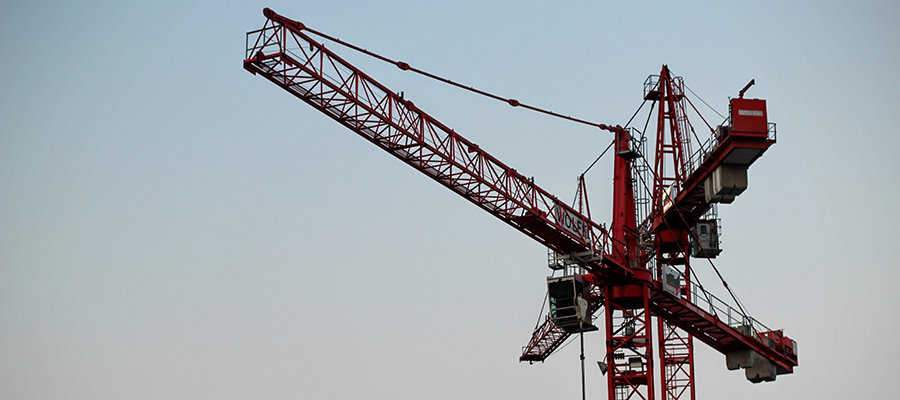

August 24, 2018
*This is Part I of a three-part feature on the ‘powerhouse trio’ of women in construction and energy. Read Part II here*
With an industry that seems to be lacking with women, we had the honour to talk to Zey Emir, a professional engineer, and construction expert, who is the current Chair of the Canadian Construction Association, and also the President of the large national consulting company, Revay & Associates Limited.
While women are still facing many barriers in the construction industry, Ms. Emir, discusses with us the changes across the Canadian construction industry landscape, her experience with the industry, and her thoughts on how being a woman has influenced her work and experience.
First, congratulations on your impressive 25+ year career, which is only getting stronger! How did you get to this point; what made you want to study engineering, to begin with?
There is no magic formula! It took hard work, opportunity and the will to capitalize on those opportunities. I also don’t take anything for granted; my focus is usually on what’s ahead. The industry is dynamic and there are always new challenges.
When I started university, I was originally enrolled in a Bachelor of Science in Psychology. A semester into my program, I felt that psychology was not the right field for me. I’ve always enjoyed math and sciences and my brother was studying civil engineering. I realized that engineering was better suited to my personality and so decided to make the switch.
What were some of the challenges you faced along the way? How did you overcome them?
There were two main challenges along the way: being a woman in a male-dominated industry and, more importantly, being a mother and having to balance work and family.
There were only a handful of women studying civil engineering when I was at school. That said, I never felt any gender bias. Quite the contrary, the male students, and professors always made us feel accepted in the classroom and in social activities. I was also fortunate I landed in a company where the boss, Stephen G. Revay, gave men and women the same opportunities.
Interestingly, I became more aware of gender bias later on in my career. How do I deal with it? You learn to choose your battles; sometimes I ignore it and other times, I call people on their words or actions.
There is definitely a struggle between career and family responsibilities. My husband and parents were very supportive which allowed me to continue working full time in a demanding career without the stress of daycare drop off and pick up and other issues that mothers without a close support system face. That said, parenthood consumes all your time when you’re not at the office. This doesn’t end with your child’s early years; I find it is as important, if not more, to be present in my teenager’s life. As such, my son is still my first priority and this bears on every decision I make, both personal and professional.
I’ve accepted that you can’t have it all; there will be moments that you will feel you’re not giving enough to your business as there will be times you will feel that you’re not giving enough to your family. You don’t overcome these challenges, you just learn to manage them.
Tell us about your experience as the Chair of the Canadian Construction Association. How did you get involved? Any interesting or unexpected surprises?
I started attending the Canadian Construction Association (CCA) meetings in about 2007 and joined the CCA board in 2009. I chaired the CCA Manufacturers, Suppliers and Services Council and was vice-chair of the CCA Standard Practices Committee. I joined the CCA executive in 2010 and the Governance Committee in 2015, which lead me to become Chair this year.
It is a great privilege to be able to give back to the very industry that allowed me to develop. At the same time, it gives me the chance to continue to meet new people from the industry and learn from them. What continues to impress me is the level of engagement of the people in the construction industry across Canada.
What might be your top 5 tips to a young professional, especially female, wanting to follow in your footsteps?
- Work hard.
- Be curious.
- Learn from your mistakes.
- Never stop learning new skills.
- Be patient.
What made you want to get involved with OsgoodePD’s Certificate in Construction Law program this fall?
In the recent years, construction projects and contracts have been going through an incredible transformation. Projects are getting bigger and more complex, contracts are becoming increasingly intricate. Players are in untested waters and stakeholders are taking on bigger risks, at times without even recognizing that they are doing so. I wanted to offer OsgoodePD students a perspective that has been informed by my work as President of Revay and Associates Limited, construction claims consultants. Our mandates often intersect with the legal aspects of construction. My perspective has also been enhanced through my involvement as Chair of the Canadian Construction Association, which represents over 20,000 construction companies.
If you had to describe the current state of the Canadian construction industry in 3 words, what would they be? Why?
Three words aren’t quite enough, so I’ll provide three concepts:
- Increased size and complexity of projects.
- Shortage in skilled workforce.
- Booming industry.
How has the construction industry/landscape changed in the past 25 years? How might things change in the next 25 years?
The construction industry in Canada is evolving quickly. The size of both public and private projects is growing exponentially. In addition, more and more projects are being “bundled” by owners who believe that this will reduce costs and create a more competitive procurement process. We need to adapt to this new reality.
We’re also observing an increasing number of construction companies and engineering firms involved in mergers and acquisitions. The consolidation of construction companies is now a significant trend. Consolidation or the necessity to consolidate is, in part, due to the companies adapting themselves to the market; the ever-increasing project scope, size and the associated financing requirements; the gap in the succession planning; and shareholders demanding more return on their investment. These factors coupled with the political stability we enjoy in Canada create an opening for foreign investment. As a result, there has been a significant increase in foreign investors in the Canadian construction market.
Most of the acquisitions, or what we call consolidation, by foreign investors resulted in a move towards globalization. There are different players in the marketplace, different ways of doing business, different cultures. We need to be agile, to adapt to the changing construction environment to end up stronger.
Along with, or perhaps as a consequence of, the growing size of projects, there are significant changes to the construction contracts. In the recent years, there’s been a surge of new and different, or what we call “atypical” construction contracts. In the past, one could count on an owner issuing similar contract documents regardless of the project. This allowed for some familiarity regarding risk and responsibility. Those days may be behind us and a careful review of the entire contract is now necessary when responding to RFPs and tender call to ensure that the proposal and bids consider all inherent risks.
Project schedules are becoming shorter and shorter, including the pre-construction phase which contributes to a decrease in the quality of documents, further adding to the risks that contractors are facing.
The construction industry is also facing a significant labour shortfall brought on by continued high demand for construction services across the country and increased retirement. We need to encourage young people of various background to join the industry.
In the coming years, innovation through robotics is expected to have a significant impact on our industry. While we are familiar with prefabrication and drones, there are also 3D printers creating larger and larger components, self-driving vehicles performing excavation and even bricklaying robots. Innovation can help reduce costs, speed up delivery time and improve safety by performing dangerous tasks. It can also help round out our labour force as the number and magnitude of projects in the market are beyond our capacity. However, we must ensure that innovation is a complement to our current workforce, not competition.
The Canadian construction industry is facing numerous challenges. We need innovative thinking to face these challenges, we need to change the way we do business and we need to convert challenges into new opportunities.
Tell us about your experience as an expert witness in complex construction claims. How did you get involved? What were the top 3 “lessons learned”?
I graduated from university in the middle of a recession and accepted the first formal job offer I received, which was working at Revay and Associates Limited. As it turns out, I loved the work and discovered that it was a perfect match for my interest and skill set! Revay is a premier consulting firm specialized in the resolution of construction disputes. In most cases, Revay becomes involved when there are disputes regarding schedule and cost overruns. Our mandates involve different types of projects; institutional, industrial or commercial. Some of our projects include high-profile mandates and most are large in size and complex in nature. It’s a fascinating field as our work involves many facets of construction projects – legal and contractual aspects, engineering, construction as well as schedule and cost. When a case is not settled, we’re called upon to provide expert testimony.
I’ve learned that in order to be a credible expert, one needs to perform detailed and objective analyses, be thoroughly prepared for testimony and maintain one’s independence and integrity at all times.
Can you share some of the interesting projects that you have worked on? Why were they so cool?
I find most of the projects I work on fascinating for one reason or another. Sometimes, the project itself is unique, other times, it is the problem that was encountered that is intriguing. The top two projects which resonated with me are:
- The Newfoundland Transhipment Terminal, which involved a jetty and tug basin built to transport crude oil production from the oil fields located offshore Newfoundland. Tankers arriving from oil fields offload the crude oil through a piping system to a waiting tanker, which then transports the oil to its destination, a refinery. This project was a milestone in my career as it was the first time I testified in court.
- A tunnel and cavern excavation under Grand Central Station in New York City. There was drilling, digging, blasting and building going on under a heritage building in one of the most populated cities in the world.
There’s a popular Canadian expression/truism “there are two seasons – winter and construction.” Describe some notable geographic differences that you have experienced in construction projects, laws or cultures across Canada.
That phrase is becoming less relevant today. Construction methods, for the most part, have adapted to climatic conditions and work often continues throughout the winter. The same can be said of geographic and cultural differences. With large construction projects occurring in every province, the workforce is mobilized from across the country.
Both labour and management are quick to adapt to any minor cultural variances that might exist. Overall, I would say that the construction industry adapts itself to most differences.
 Zey Emir is the President of Revay and Associates Limited and current Chair of the Canadian Construction Association. She is a professional engineer with 25+ years of experience in project management and consulting to the construction industry.
Zey Emir is the President of Revay and Associates Limited and current Chair of the Canadian Construction Association. She is a professional engineer with 25+ years of experience in project management and consulting to the construction industry.

